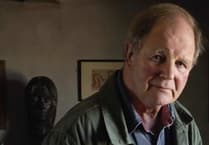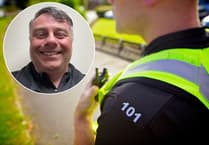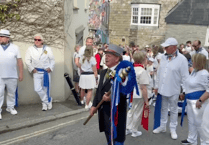The Box, Plymouth’s new museum, art gallery and archive has today (Saturday) opened to the public an exhibition of works by the great Georgian artist Sir Joshua Reynolds that he painted for, or were collected by, the Eliot family of St Germans, in South East Cornwall.
On Friday afternoon members of the present-day Eliot family, Bianca, Lady Eliot, her twin daughters Lady Ruby and Lady Violet, and their younger brother Albi, the 11th Earl of St Germans, were given a private viewing of the portraits of their 18th-century forebears prior to the exhibition opening to the public. A reporter from The Cornish Times was also invited to view the display while last-minute finishing touches were being carried out by curators.
Joshua Reynolds, who became a central figure in the social scene of mid to late 18th century London and was first president of the Royal Academy of Arts, was born at Plympton in Devon in 1723. He was inspired to start drawing by the example of his elder sister, Mary Palmer, and in 1740 she paid half the premium for the portrait painter Thomas Hudson, also from Devon, to take young Joshua as a pupil in London.
In 1743, Joshua Reynolds returned to his home area to work as a portrait painter in Plymouth Dock – now Devonport and in the 18th century the most fashionable area of town thanks to the presence of large numbers of naval officers.
After a brief return to London, the death of his father in 1745 saw Reynolds returning to Plymouth Dock to share a house with his sisters.
It was at this time that his portraits of Royal Navy officers came to the attention of Captain John Hamilton, who was a close friend of the Eliots of the Port Eliot mansion at St Germans. Indeed, Hamilton would later marry into the family and become a close friend of Reynolds himself prior to his tragic early death by drowning in Portsmouth Harbour in 1755.
As Emma Philip, Senior Curator at The Box, says: “Perhaps it was Reynolds’ exceptional ability to capture the individual characters of his sitters that first attracted the Eliot family or perhaps it was this close relationship that gave rise to some of Reynolds’ most eye-catching work.
“Many of the pieces within Family & Friends: Reynolds at Port Eliot speak to this mastery, in particular a rare example of an early group portrait in The Eliot Family (1746) – which remarkably, shows children actually playing and foreshadows Captain John Hamilton’s future role as part of the family – and Lady Anne Bonfoy (née Eliot) (1755), a stunning portrait which depicts the young woman – whom Reynolds had known for a number of years – in the type of dynamic stance previously reserved for portraits of men.”
The Eliots were not the only Cornish family to have an influence on Reynolds’ career. In 1749, Lord Edgcumbe, of Cotehele in the Tamar Valley and Mount Edgcumbe on the Rame Peninsula, introduced Joshua to Commodore Augustus Keppel, who then offered the young Reynolds a passage to the Mediterranean on the warship HMS Centurion. This voyage led to the artist spending two years in Rome studying the Old Masters – but a severe cold he suffered there resulted in him becoming partially deaf and afterwards he always carried a small ear trumpet. However, Emma Philip says the portraits in The Box exhibition – spanning as they do Reynolds’ earliest days of painting portraits right through the middle and later years of his career - show how much his painting techniques improved after that visit to Rome.
On his return overland journey home via Florence, Bologna, Venice and Paris, Reynolds was accompanied by the young Italian Giuseppe Marchi, who subsequently became his studio assistant for the rest of his artistic career as a renowned society portrait painter based in London. Marchi and other assistants often painted the clothing in the portraits, Reynolds the faces and hands.
In London, Reynolds first took rooms in St Martin’s Lane, then Great Newport Street and then Leicester Fields – now Leicester Square – with his sister Frances as housekeeper. Again Lord Edgcumbe was pivotal in Reynolds’ career by recommending the Dukes of Devonshire and Grafton to sit for him, and other peers of the realm followed, including the Duke of Cumberland, third son of King George II. By the 1760s Reynolds could charge 80-100 guineas for a full-length portrait – a huge sum.
Other Westcountry patrons included the Parker family of Saltram near Plymouth, now under National Trust ownership and where Reynolds portraits can also be seen.
In 1791 the loss of sight in his left eye forced Reynolds into retirement. At his funeral in London’s St Paul’s Cathedral, Lord Eliot was one of the pall-bearers and even after Reynolds’ death the Eliot family continued to show great interest in his art, even as late as 1835, when they purchased the picture Hope Nursing Love.
The exhibition Family & Friends: Reynolds at Port Eliot is an opportunity for the visitors to see 14 of the 23 paintings from the Eliot estate that were accepted by Plymouth City Council in lieu of inheritance tax in 2007. The exhibition will be on display from July 24- September 5, 2021.
Elsewhere in The Box, visitors can also view other portraits by Reynolds - including self-portraits and portraits of his own family members - plus a sketchbook from his Italian tour and his cabinet of painting materials.




